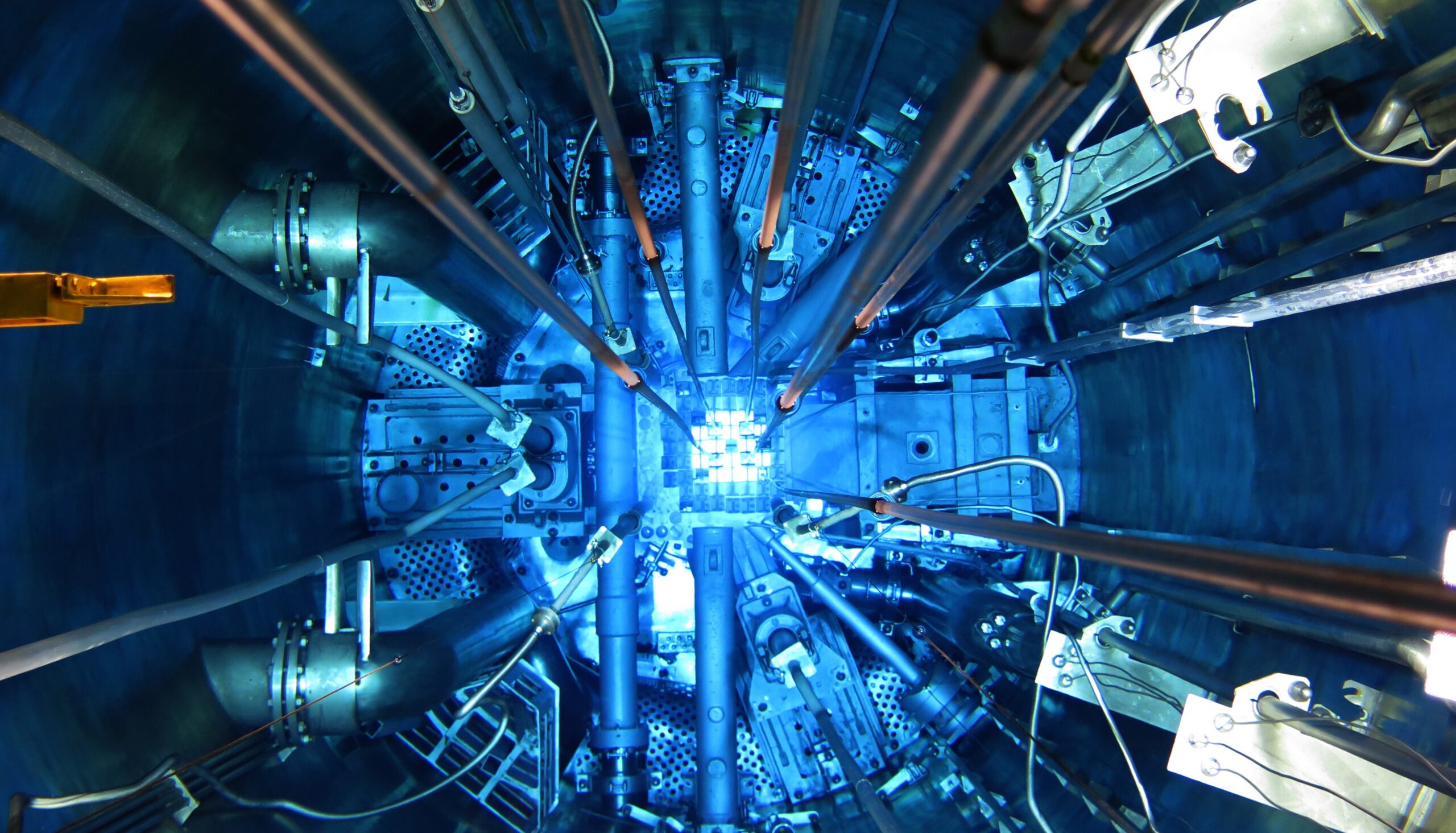Cherenkov Radiation: A Key Tool in Nuclear Safeguards and Verification
Cherenkov radiation is a phenomenon that typically occurs in radioactive materials immersed in water. This type of radiation is visually striking, often appearing as a blue glow. While nuclear material, from which radioactive material is a by-product, can be harnessed for peaceful purposes such as energy production, it also has the potential to be used for nuclear weapons. This dual-use nature of nuclear material necessitates stringent oversight to ensure it remains in peaceful use.
The Role of the IAEA in Nuclear Safeguards
The International Atomic Energy Agency (IAEA) plays a crucial role in verifying that nuclear materials and facilities are used exclusively for peaceful purposes. To achieve this, the IAEA requires states to declare detailed information regarding their nuclear materials. This includes the location, amount, chemical composition, physical form, and intended use. The IAEA then verifies the accuracy and completeness of the information provided by the states.
Advanced Tools for Verification
To carry out these verifications, the IAEA uses specialized equipment such as the neXt generation Cherenkov viewing devices (XCVDs) and digital Cherenkov viewing devices (DCVDs). These advanced tools capture the light emitted by Cherenkov radiation, enabling Nuclear Safeguards Inspectors to analyze nuclear materials at various facilities and other locations. For example, inspectors can measure the Cherenkov radiation in the storage ponds of spent nuclear fuel from reactors. By doing so, they can verify whether the reported amount of spent nuclear fuel is accurate and ensure that no material has been diverted from peaceful use.
How Cherenkov Radiation Works
Cherenkov radiation occurs when a charged particle, such as an electron, travels through a dielectric medium like water at a speed greater than the speed of light in that medium. This results in the emission of a blue light. The phenomenon is named after Soviet physicist Pavel Cherenkov, who first observed it in 1934. Cherenkov radiation is analogous to the sonic boom produced when an object exceeds the speed of sound in air.
Ensuring Peaceful Use of Nuclear Material
The verification process carried out by the IAEA is vital for global security. By ensuring that nuclear materials are not diverted for non-peaceful purposes, the IAEA helps prevent the proliferation of nuclear weapons. The use of advanced Cherenkov viewing devices allows for precise measurement and verification, providing a robust mechanism to monitor compliance with international safeguards agreements.
Good to Know: Applications and Implications
Beyond its use in nuclear safeguards, Cherenkov radiation has several other applications. In medical physics, for instance, Cherenkov radiation is used in radiation therapy to visualize the delivery of radiation doses to cancer patients. The blue glow helps clinicians ensure that the treatment is administered accurately.
Moreover, Cherenkov detectors are employed in particle physics experiments to identify high-energy particles. These detectors are crucial in experiments conducted at major research facilities like CERN, where understanding particle interactions is essential for advancing our knowledge of the fundamental forces of nature.
Review and Reaction
The adoption of neXt generation Cherenkov viewing devices (XCVDs) and digital Cherenkov viewing devices (DCVDs) represents a significant advancement in nuclear safeguards technology. These tools enhance the IAEA’s ability to monitor nuclear materials with greater accuracy and reliability. Experts in the field have lauded this technological progress as a critical step towards strengthening global nuclear security.
However, the effectiveness of these devices also depends on the cooperation of states in providing accurate and timely information about their nuclear materials. Transparency and adherence to international safeguards agreements are essential for the success of these verification measures.
Conclusion
Cherenkov radiation serves as a powerful tool in the IAEA’s mission to ensure that nuclear materials are used solely for peaceful purposes. The advanced Cherenkov viewing devices allow for precise verification, helping to detect any potential diversion of nuclear material. This not only safeguards global security but also promotes the peaceful use of nuclear technology for energy production and other beneficial applications.
For more detailed information on the IAEA’s nuclear safeguards and verification efforts, you can visit their official website here.
Final Thoughts
As nuclear technology continues to evolve, the importance of effective safeguards and verification mechanisms cannot be overstated. The use of Cherenkov radiation and advanced detection devices ensures that the international community can trust that nuclear materials are being used responsibly. This trust is crucial for fostering cooperation and maintaining peace in an increasingly interconnected world.
For more Information, Refer to this article.


































